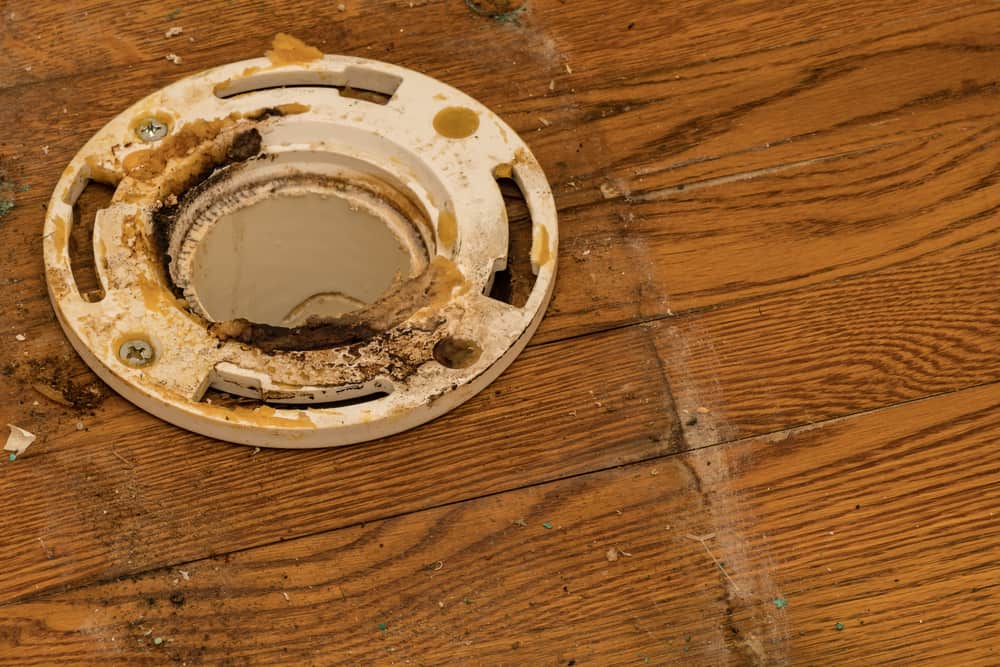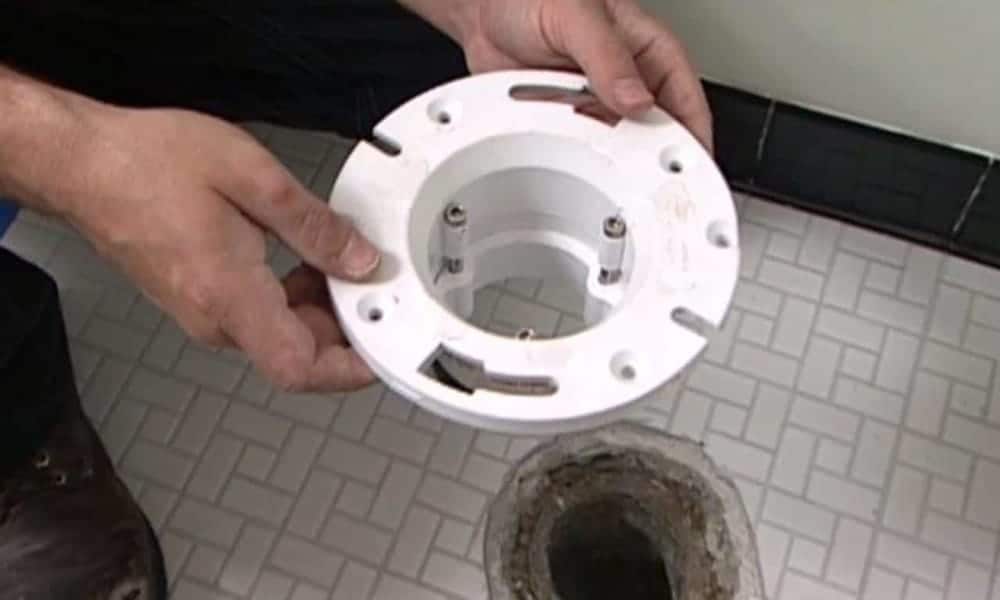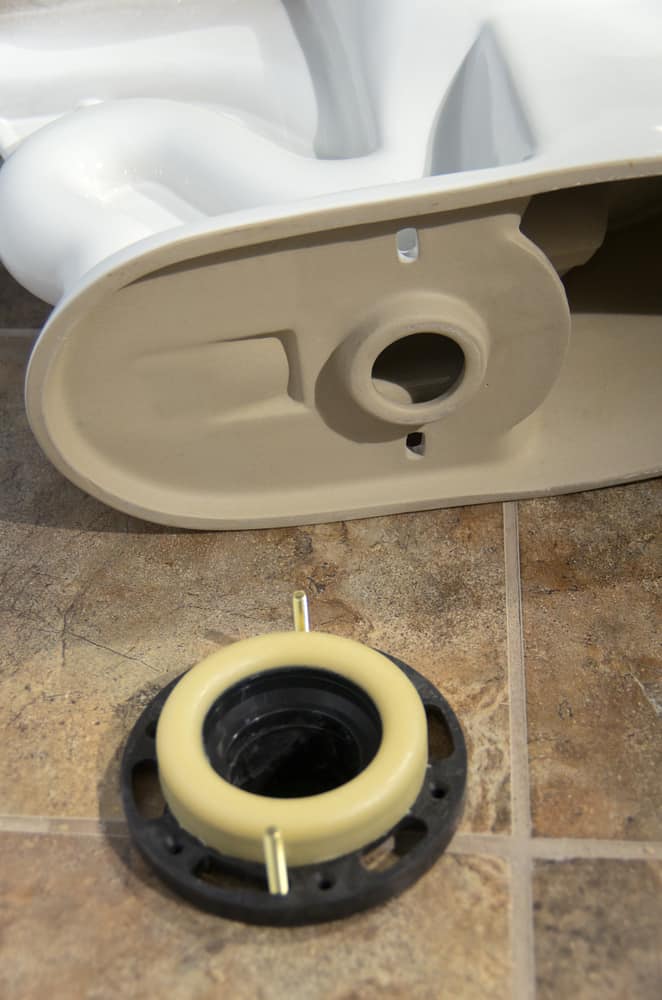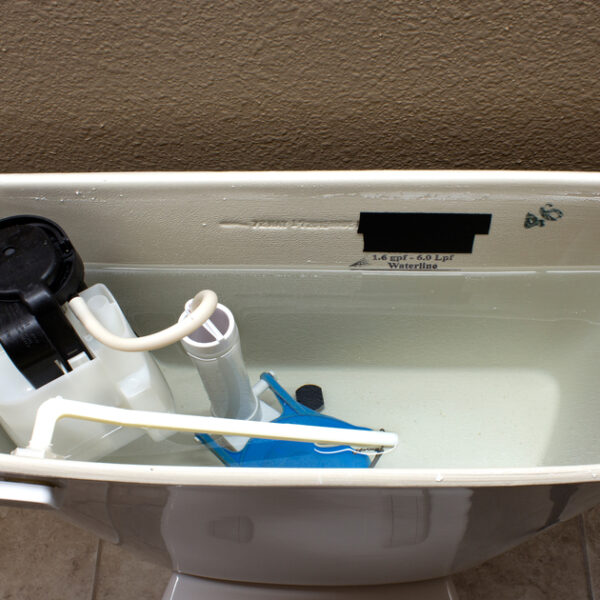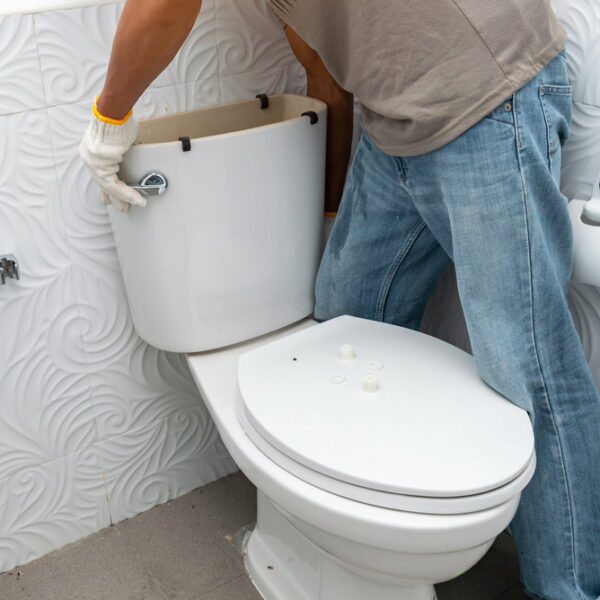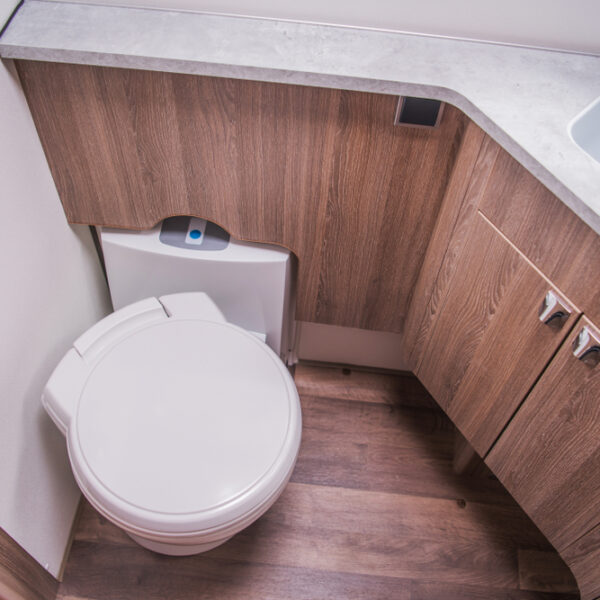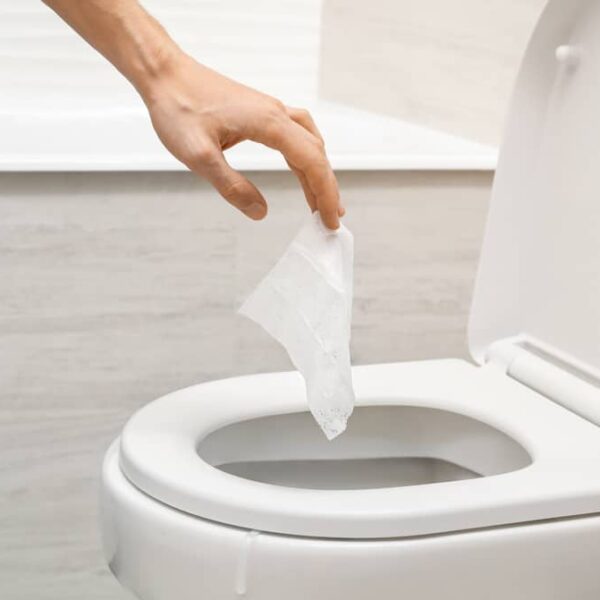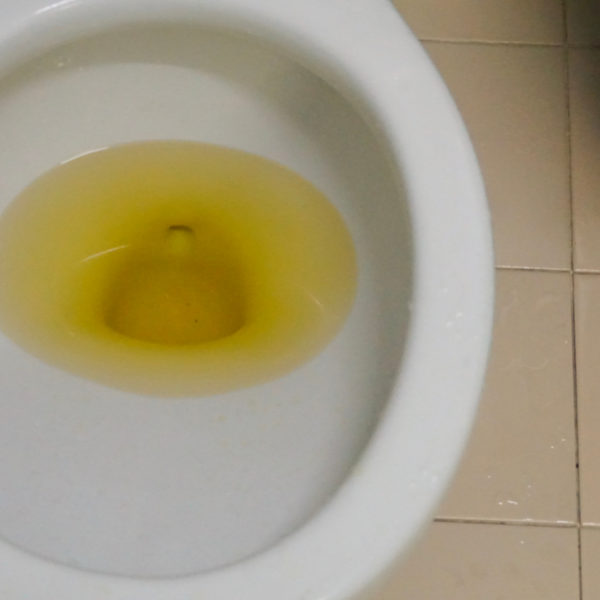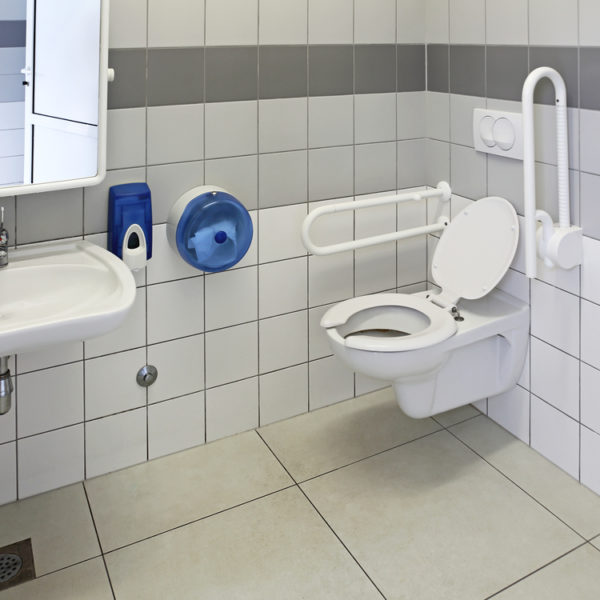When installing a toilet, everything needs to fit together perfectly or you run the risk of the toilet springing leaks or sewer gas escaping from any gaps in the plumbing, and a major part of this is ensuring the toilet flange is installed and attached to the toilet horn correctly.
This means you need the flange to sit at the right height, but what height should it be at? In this post, we discuss this issue as we answer the question, should the toilet flange be flush with the floor?
What is a toilet flange?
Let’s start with the basics – what is a toilet flange?
A toilet flange – also known as a “closet flange” – is a type of fitting that is used to connect the toilet to the drainpipe. It is fixed to the floor with rustproof screws, and the toilet is then attached to the flange with bolts to anchor it to the floor.
The horn of the toilet is attached to the flange with a wax ring, which creates a watertight seal, preventing leaks and keeping sewer gas trapped inside.
Does the flange need to be flush with the floor?
Ideally, a toilet flange is installed over the top of the finished floor. For example, if you have a tile floor, the flange should sit on top of the tiles, which means the top of the flange will sit slightly above the height of the floor rather than flush with the surface of the floor.
The thickness of a toilet flange is usually about ¼” – a toilet flange that sits on top of the floor is the perfect installation, and the top of the flange will be about ¼” above the surface of the floor.
This is not always the case, though, and sometimes the height of the toilet flange may be more than ¼” above the surface of the floor, and it is also possible to have a flange that is level with or lower than the floor surface.
However, the good news is that even though ¼” above the floor surface is the perfect height, a toilet flange that is flush with the floor surface or that is even ¼” below the surface of the floor is still ok – you can still install a toilet correctly.
Why are toilet flanges sometimes higher or lower than the floor?
There are several reasons for toilet flanges to be higher or lower than the ideal height.
A common reason for this to occur is that the plumber didn’t allow for the extra height of the finished floor during the installation process.
When the house was built, the plumbing would have been installed before the final floor surface was fitted. In this case, if the plumber didn’t know the thickness of the floor that was due to be laid, he may simply have fitted the flange directly onto the raw surface below.
Alternatively, toilet flanges can end up being too high or too low after a new floor is laid.
The material for the new floor may be thicker or thinner than the old floor, which will raise or lower the floor surface relative to the existing toilet flange.
As we mentioned above, a flange that is ¼” above the surface of the floor is perfect but anything up to ¼” below the floor surface is still ok.
On the other hand, if the flange is more than ¼” higher or lower than the surface of the floor, it will make it more difficult to install your toilet.
If this is case, it’s still not a huge deal because there are some simple fixes you can try, which we’ll come to later in this post – but first, let’s think about the best way to fit a toilet flange in the best-case scenario.
What’s the best way to install a toilet flange?
The best way to install a toilet flange is to wait until the floor is laid so you know exactly how high the finished floor surface will be.
In this case, you simply place the flange in position over the drain with the underside of the top of the flange sitting on the surface of the floor. This type of installation will leave you with the perfect toilet flange height for fitting your toilet over the top.
Alternatively, if you haven’t yet laid the floor but you have a few left-over pieces of tile or whatever other material the floor is going to be made of, you can place these under the flange when you fit it, which again will give you the perfect clearance.
If you can’t quite visualize how this works, here’s a great video that explains both options clearly.
What can you do if the flange is too low?
If your toilet flange is too low, there’s no need to panic since there are a couple of quick fixes that you can try. The first is to use an extra-thick wax ring or two stacked wax rings to compensate for the difference, while the second is to use an extender kit.
Let’s have a quick look at these techniques now.
1. Using wax rings
If the toilet flange is too low, it means you are at risk of water leaking out or sewer gases escaping from your toilet, both of which are highly undesirable.
Usually, the seal between the horn of the toilet and the flange is created by using a wax ring, but if the flange is too low, the wax ring might not be able to make a satisfactory seal. Inthis case, using a thicker wax ring or using two stacked wax rings is an obvious solution.
Start by turning off the water supply to the toilet. After that, empty both the tank and the toilet bowl, and then remove the nuts and lift the toilet from its position to gain access to the flange beneath it.
If the toilet has been grouted in place, you may need to use a hammer and chisel to remove the grout. If you do this, you should take great care not to damage the porcelain of the toilet.
You will probably see that the old wax ring is partially stuck to the flange or the bottom of the toilet – or both – so you’ll need to scrape it off with a putty knife.
When the flange is clean, next, simply fit the new thicker wax ring in place – or the two stacked wax rings if that’s the option you’ve chosen.
If you use two wax rings, the weight of the toilet will create the pressure needed to make a watertight seal between the rings.
When everything is in place, fit the toilet back over the flange, turn on the water to fill the tank and flush the toilet to test. If there are no problems, the job has been a success.
2. Using extender kits
Using wax rings is an effective solution, but it’s not a long-term fix since the rings will eventually wear out, and you’ll need to buy a replacement.
An alternate option is to use a toilet flange extender kit that’s designed to give your toilet flange a little extra height.
These come in several formats. The most basic type consists of a simple ring that you fix to your existing flange to give it extra height. They come in varying thicknesses, allowing you to choose one that gives you the right amount of height.
A second type looks a little like a toilet flange. This type fits inside your existing toilet flange, and the top sits on the top of the old flange, increasing the height relative to the floor surface.
Others come with sets of spacer rings that you stack on top of each other, allowing you to find the perfect height for your floor. Depending on how many rings you use, you may also need to buy some long bolts to fix everything in place.
Some extender kits come with a rubber gasket or washer to create an airtight seal – but with others, you will need to seal them with silicone caulk.
In general, these kits are easy to use and come with clear instructions for you to follow for installation.
They are also a longer-term solution than thicker or stacked wax rings, and if you opt for an extender, you probably won’t have to worry about your toilet flange again for many years to come.
What about a toilet flange that’s too high?
A less common issue but one that can occur is if the toilet flange is too high.
This usually happens when you replace a bathroom floor surface with a new surface that is thinner than the old one.
Another reason for this problem can be that when installing the drain, a plumber allowed too much height for the as-yet unlaid floor, resulting in a flange that is too high. At the same time, a flange that’s too high can just be the result of a poor plumbing job.
Before the toilet has been installed, a flange that’s too prominent will be obvious just from looking at it. However, if it has already been fitted, having a toilet that is unstable or that rocks is a tell-tale sign that the flange was too high for a proper installation.
In any case, it’s not such a big problem, and just as with a flange that’s too low, you have several options for how to rectify a flange that’s sitting too high.
1. Lay a sub-layer beneath your new floor
If your high flange is a result of your new floor surface being thinner than the old one, you can resolve the problem even before the floor is laid if you notice it in time.
If you see that the new floor is going to be too thin, all you need to do is insert a layer of subfloor of the right thickness before you lay the top floor surface.
This will ensure the new floor is at the same level as your old floor – and that the flange is at the correct height.
2. Use grout under the toilet
If the toilet sits too high on the flange, this may cause it to move about. However, if the difference is only minor, it can easily be corrected by using grout around the base of the toilet.
The best way to do this is to fit some shims and then apply grout around the bottom of the toilet. Then, when the grout is dry, remove the shims and fill the holes with grout. This should then stop your toilet moving about when you sit on it.
3. Cut back the drain
A slightly trickier operation is to cut back the drain so the flange sits at the correct height.
To do this, measure the height of the flange above the surface of the floor to work out how much you need to cut off.
You can then remove the top portion of the drainpipe, which will leave the flange sitting at the correct height.
A flange should sit just above the surface of the floor – or as close as possible
As we have seen, a toilet flange shouldn’t be flush with the surface of the bathroom floor – rather, the bottom of the flange should sit on top of the finished floor, which means the top of the flange should be around ¼” above the surface.
However, if the toilet flange sits flush with the floor surface, or even if it’s slightly below, it’s not a huge issue – and even if it sits significantly too high or too low, there are several options you can try to rectify the problem.
